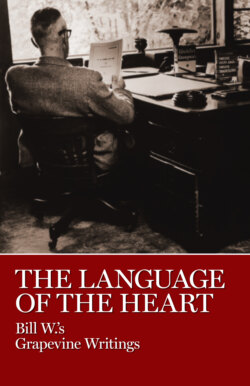Читать книгу The Language of the Heart - Bill W. - Страница 8
PART ONE: 1944 -1950
ОглавлениеIn the summer of 1944, Alcoholics Anonymous was experiencing phenomenal growth. AA’s leadership still lay primarily in the hands of its founding members, and from one tiny office in New York City, Bill W. and a few others sought to keep up with a nearly overwhelming surge in membership. The Jack Alexander article, published in the Saturday Evening Post in 1941, had caused AA’s numbers to grow from 2,000 to 8,000 by the end of that year. By 1950, the membership would swell to more than 96,000, and the number of groups would jump from about 500 in 1944 to 3,500 in 1950. In tandem with this upsurge within the Fellowship, many nonalcoholics in medicine, religion, and the media were becoming aware of AA as a solution for seemingly hopeless alcoholics, and were clamoring for information and answers about AA’s policies.
The flood of letters pouring into AA’s small Headquarters office, along with the experience gleaned from visits to groups all over North America, clarified for Bill and the other founding members the principles that seemed to enhance group unity, as well as those that often led to conflict. Faced with growth and challenges from within and without, Bill was fully aware that the new Fellowship could easily founder under the weight of its own success—unless a common body of guiding principles and an effective policy for relating to the general public could be formulated.
In the articles in Part One, Bill described the accumulated experience and suggested for the Fellowship’s consideration a set of practical guiding principles. These landmark articles reached a climax in the April 1946 issue with “Twelve Suggested Points for AA Tradition,” now the long form of the Twelve Traditions.
